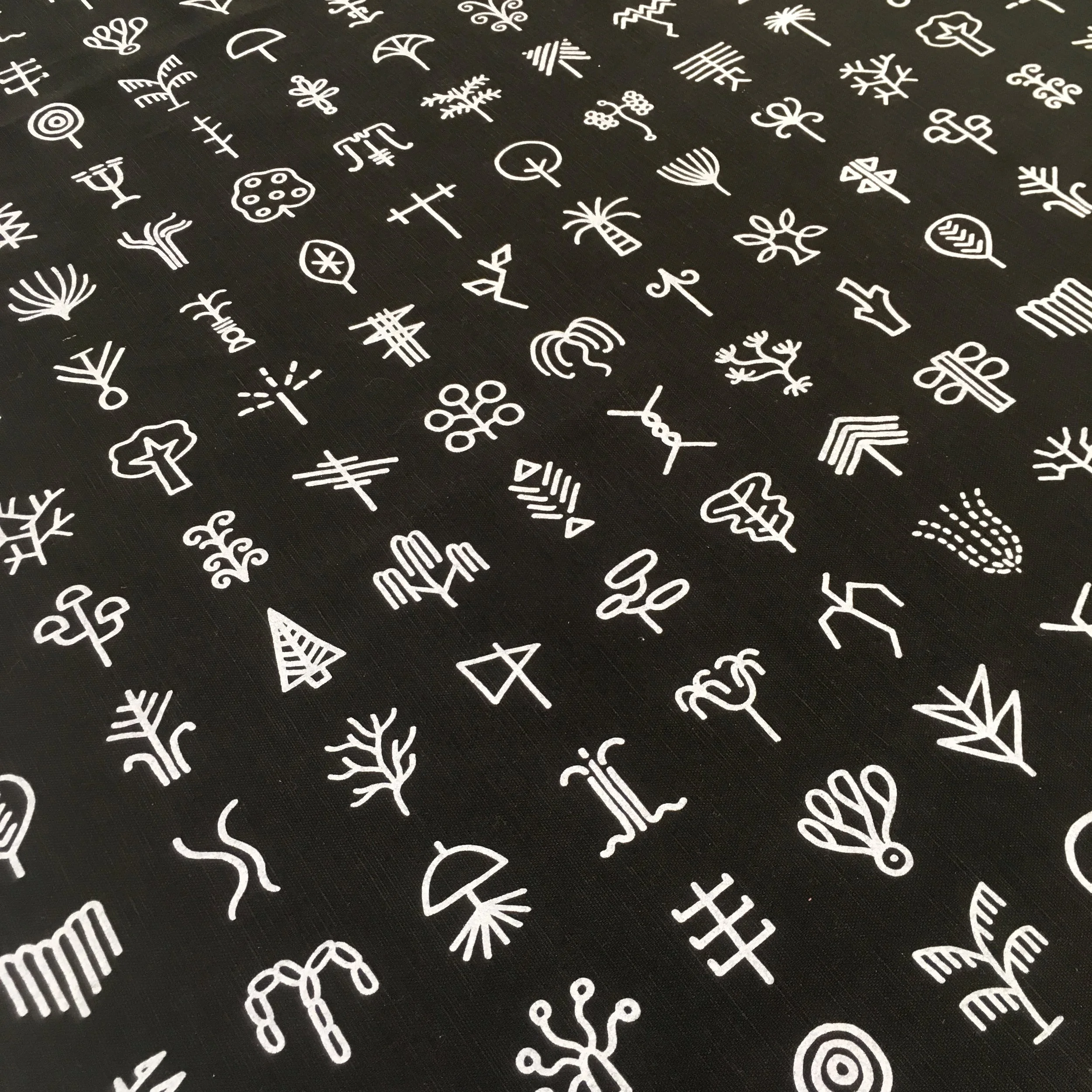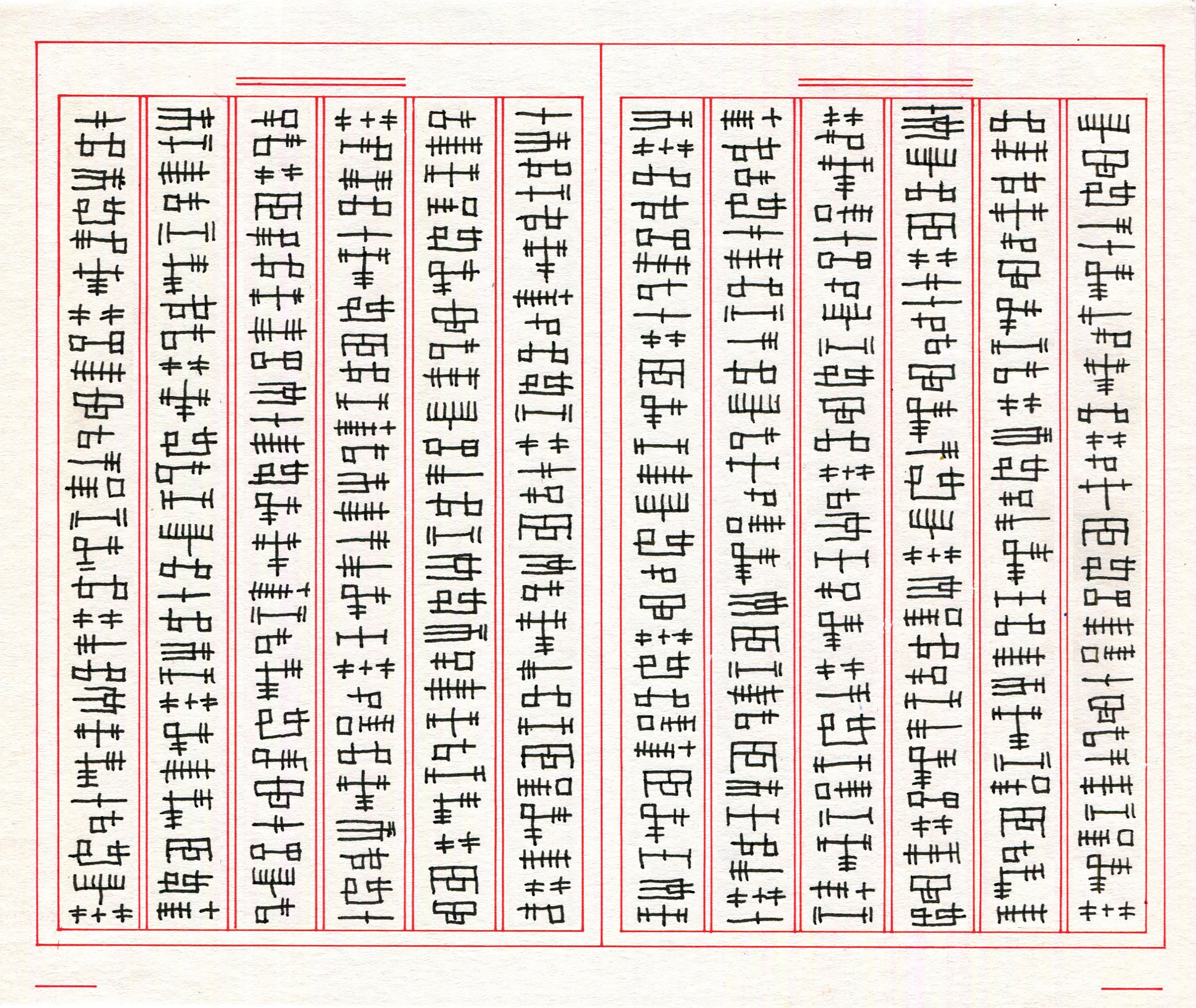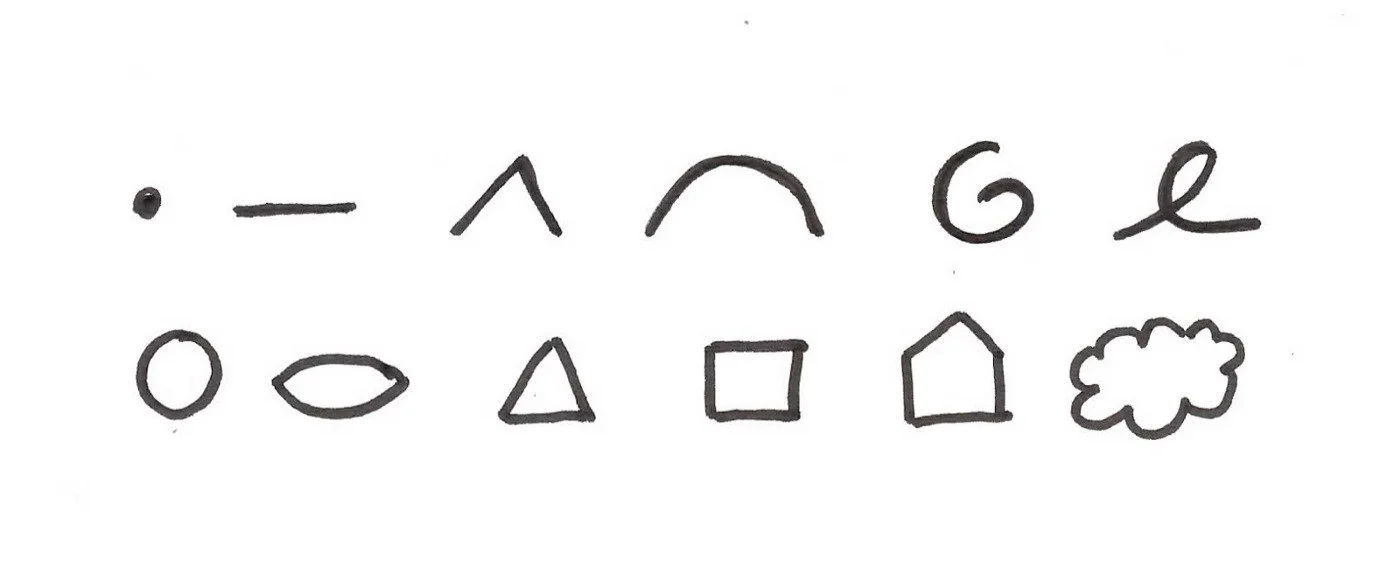Fun Friday Resources
/Every now and then I come back to a favorite strategy: asemic writing. You’ve seen it in action in one of my “postcard quotes” on Twitter:
Do you remember what it was like not to be able to read? Of course not — and similarly you won't remember what it was like not to Make the Thing That Is Not. #AbortiveAttempts #Lichtenbergianism
It’s fun to do and oddly meditative: as your hand takes over and your brain struggles not to assign meaning or allow the hand to fall back into meaningful habits, many ideas can bubble to the surface.
In the same vein, I find artists who create glyphs intriguing. This week I came across the work of Alexandra Zgismonda:
She uses these pictographic designs in embossed metal jewelry, for example.
I find her glyphic “doodles” incredibly interesting:
Like asemic writing, these little bits seem to be wanting to transmit a message to our brains, conditioned as we are to reading marks on paper.
More than that though, they present an interesting STEAL FROM THE BEST challenge: What happens if you draw two/three/four tiny little circles, then try to find as many ways to connect them with lines as you can. Straight lines? Curved lines? Lines that can’t seem to walk straight? How many lines? Can the lines cross each other? Etc., etc.
I imagine you could fill whole WASTE BOOKS with this one exercise.
Taking another big step sideways away from asemic writing, take a look at sketchnoting and the visual alphabet.
First of all, the concept of sketchnoting is fabulous and ought to be taught and used in every classroom from middle school to college. I find it interesting that fellow librarian Jen Giffen has made the switch to electronic notetaking; for reasons I’ve written about before, I’ll probably stick to paper & pencil WASTE BOOKS for the duration.
Second, Dave Gray’s visual alphabet is, as he claims, incredibly simple yet equally powerful. If you learn these twelve squiggles so that they’re as automatic as the alphabet, your visual note-taking abilities are increased exponentially.
Dave Gray’s visual alphabet. I think I would add a star and an asterisk to the lineup.
It reminds me very much of Ed Emberley’s series of drawing books for kids: basic building blocks that anyone can draw and combine into reasonable facsimiles of faces and jet planes and dinosaurs.
So scribble away, my lovelies — scribble, scribble, scribble, and throw meaning to the winds!







